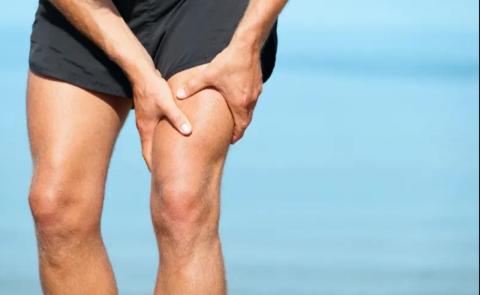
Rest Day or Go Day? How to Handle Running with Sore Muscles
Published on April 14 by Matt
Muscle soreness is a familiar companion for runners—especially after a tough workout, long run, or when returning to training after a break. But when your legs feel heavy and tight the next day, should you lace up your shoes and hit the pavement, or take a well-earned rest?
The answer depends on a few key factors.
Understanding Soreness: DOMS vs. Injury
Most post-run soreness is caused by Delayed Onset Muscle Soreness (DOMS)—a natural response to new or intense activity that typically peaks 24–72 hours after exercise. DOMS can cause stiffness, mild swelling, and tenderness, but it's usually not harmful.
However, if you're experiencing sharp, localized pain, joint discomfort, or swelling that worsens with activity, it might be more than just soreness. These can be signs of an injury, and pushing through may do more harm than good.

When It’s Okay to Run Through Soreness
You can likely continue running if:
- The soreness is mild to moderate and feels like muscle fatigue.
- The discomfort improves once you start moving.
- You can run without changing your stride or form.
In fact, light exercise can help ease DOMS by increasing blood flow and reducing muscle stiffness. Consider swapping a high-intensity session for an easy jog, cross-training, or active recovery.
When You Should Rest Instead
Take a rest or recovery day if:
- The soreness is severe or getting worse with activity.
- Your gait is affected (e.g., limping, altered stride).
- You feel general fatigue, low motivation, or signs of overtraining (elevated heart rate, poor sleep, irritability).
- You have pain in joints or tendons rather than muscles.
Listening to your body is key. A missed run is better than risking an injury that sidelines you for weeks.

Tips to Ease Soreness
Whether you run or rest, here are some proven ways to soothe sore muscles:
- Gentle movement: Walking, swimming, cycling, or yoga can help loosen stiff muscles.
- Hydration: Water helps flush out metabolic waste and promotes muscle recovery.
- Foam rolling: Targets tight areas and increases circulation.
- Massage or Epsom salt baths: Both can offer temporary relief and relaxation.
- Protein and carbs: Refuel with a balanced post-run meal to support muscle repair.
- Sleep: Your most powerful recovery tool.
The Bottom Line
Running while sore isn’t always a bad idea—but it requires smart judgment. Learn to differentiate between normal soreness and signs of injury. When in doubt, choose rest or a lower-impact activity, and focus on recovery strategies that help your body bounce back stronger.
Remember: consistent training is built on smart decisions, not just toughing it out.